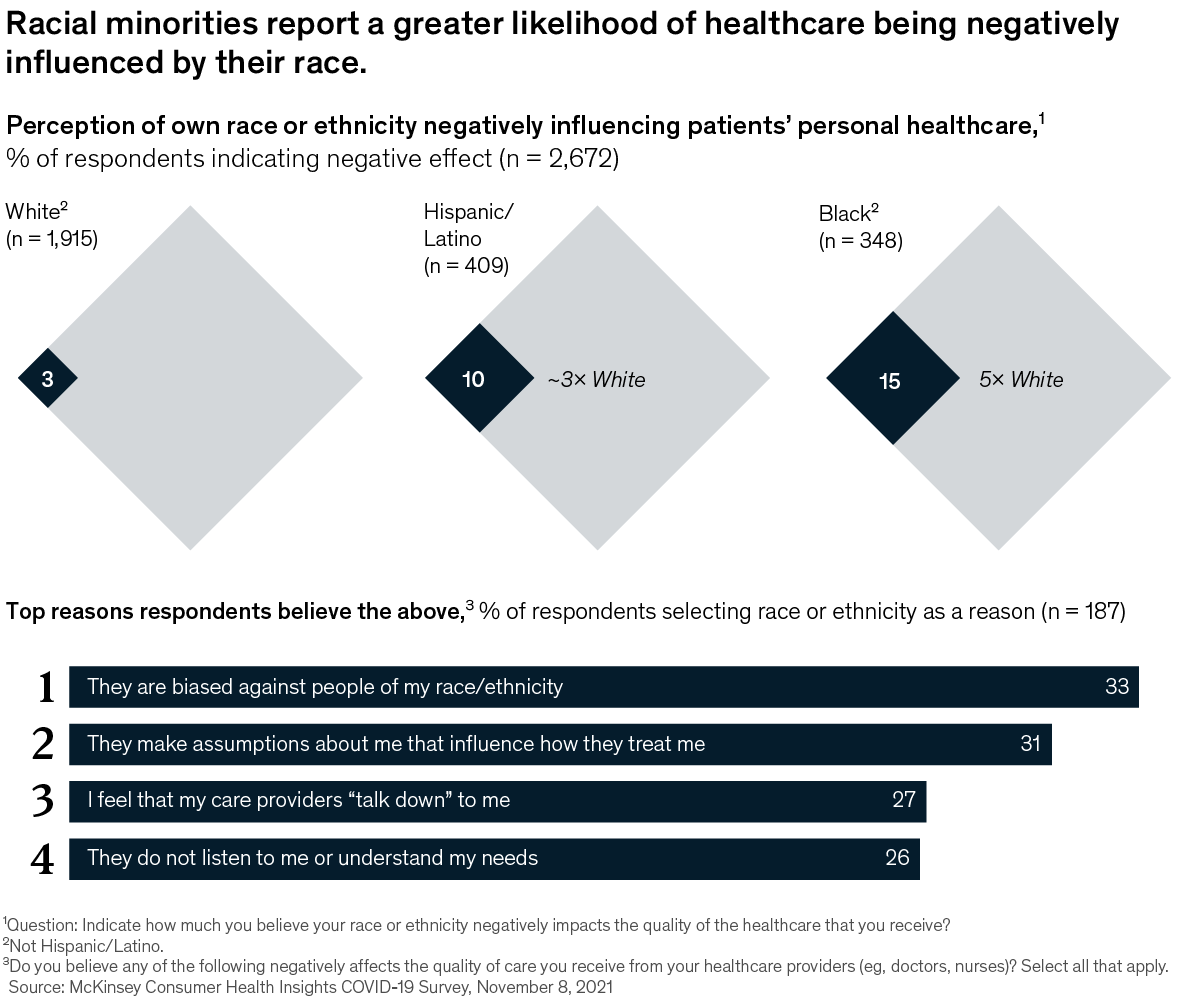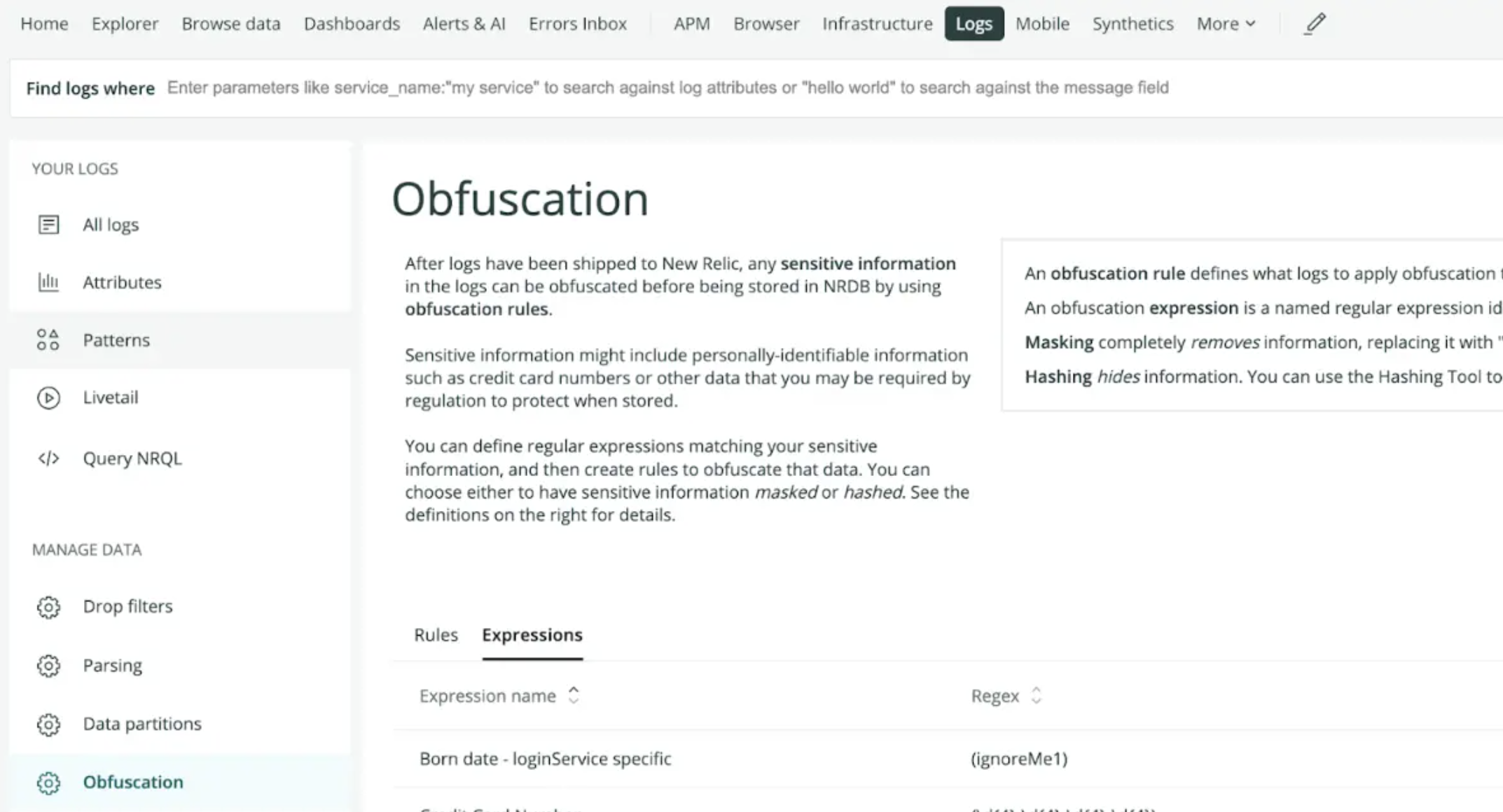Archives
- By thread 5224
-
By date
- June 2021 10
- July 2021 6
- August 2021 20
- September 2021 21
- October 2021 48
- November 2021 40
- December 2021 23
- January 2022 46
- February 2022 80
- March 2022 109
- April 2022 100
- May 2022 97
- June 2022 105
- July 2022 82
- August 2022 95
- September 2022 103
- October 2022 117
- November 2022 115
- December 2022 102
- January 2023 88
- February 2023 90
- March 2023 116
- April 2023 97
- May 2023 159
- June 2023 145
- July 2023 120
- August 2023 90
- September 2023 102
- October 2023 106
- November 2023 100
- December 2023 74
- January 2024 75
- February 2024 75
- March 2024 78
- April 2024 74
- May 2024 108
- June 2024 98
- July 2024 116
- August 2024 134
- September 2024 130
- October 2024 141
- November 2024 171
- December 2024 115
- January 2025 216
- February 2025 140
- March 2025 220
- April 2025 233
- May 2025 239
- June 2025 303
- July 2025 36
-
MD, today's 🎙 webinar starts in less than 1 hour.
MD, today's 🎙 webinar starts in less than 1 hour.
There is still time to join us for Webinar: Remote for refugeesHi MD,
🎙 WEBINAR: Remote for refugees
Starts in less than 1 hour.
What will you learn?
- Practical insights to help employers and hiring managers find forcibly displaced talent
- Benefits of hiring forcibly displaced talent for the employee and the employer
- Practical guidance on how to overcome challenges when hiring refugee talent
- The state of refugee work rights around the world and the advocacy movement for right-to-remote-work
- Announcement about a new platform to help employers find vetted refugee talent
Speakers:
-
Peter Maher: Senior Special Operations Manager at Remote
-
Filipa Matos: VP of Special Operations at Remote
-
Lorraine Charles: Co-founder & Executive Director at Na'amal
Hire, onboard, and pay your international team in minutes and stay compliant.
You received this email because you are subscribed to News & Offers from Remote Technology, Inc.
Update your email preferences to choose the types of emails you receive.
Unsubscribe from all future emailsRemote Technology, Inc.
Copyright © 2022 Remote Technology, Inc. All rights reserved.
18 Bartol St. #1163 San Francisco California
by "Remote" <hello@remote-comms.com> - 03:02 - 20 Jun 2022 -
Harnessing anxiety and fear: A leader’s guide
Leading Off
From anxiety to advantage .
Share this email 



ESSENTIALS FOR LEADERS AND THOSE THEY LEAD 
Anxiety and fear are universal experiences, and there’s plenty to be fearful and anxious about these days. The pandemic. The swings of the stock market. Changes in how—and where—we work. For leaders, it’s important to be able to parse what are real fears and what are anxieties to get a better handle on mental health and burnout. This week, let’s explore some productive ways to calmly help yourself and those you lead through these trying times. AN IDEA 
Harness your anxiety for good At face value, anxiety can seem like an inherently negative—and sometimes debilitating—emotion that we should avoid, but that doesn’t have to be the case. In this Author Talks interview, psychology and neuroscience professor Dr. Tracy Dennis-Tiwary explains how, with some mindset shifts, anxiety can go from feeling like a malfunction to serving as a useful tool. “When we listen to anxiety as information that’s energizing us, instead of frightening and depleting us, it helps us be more innovative and creative,” she says. In her book, Future Tense: Why Anxiety Is Good For You (Even Though It Feels Bad), she explores how we can work toward embracing anxiety as a human experience instead of pushing it away—which is more likely to cause it to spiral out of control. When we think of anxiety as an adaptive quality of resilience, we are better equipped to navigate it and to let go of anxieties that are not useful, including those that are unreasonable in proportion to the current situation or threat. 
A BIG NUMBER 37% That’s the percentage of workplace respondents who reported experiencing anxiety in the past year, according to a 2020 study. Recent numbers from the World Health Organization show that anxiety and depression levels have increased by 25 percent globally since the start of the COVID-19 pandemic. As a leader, you can influence your team’s anxiety levels for better or worse. This Harvard Business Review series on managing in an anxious world explores how leaders can effectively face their anxiety and that of their teams in four stages: identifying how your anxiety manifests, taking steps to actively manage it, leading others in times of high anxiety, and building a support system of processes and people to manage it over the long term. As the authors say, “Anxiety is a powerful enemy, so we must make it our partner.” 

A QUOTE “Dampening the anxiety that fuels distracting rumors requires explaining decisions in enough detail to convey that you, as a leader, are treating the people affected with nuance and care.” That’s Hayagreeva “Huggy” Rao and Robert Sutton, management experts and professors at the Graduate School of Business at Stanford University. In times of extreme uncertainty, they say, leaders can help their teams move “from a room called fear to a room called hope” by focusing not only on making the right decisions but also on doing the “emotion work” to frame and implement them in the right way. By exhibiting understanding and extending a feeling of control, leaders can anticipate and manage the psychological responses of others, including anxiety and despair, in difficult times. 
A SPOTLIGHT INTERVIEW 
What lessons can an NFL trainer, gym founder, and creator of the Afghan Women’s Boxing Federation impart about fear? In this Author Talks interview, Tareq Azim describes fear not as something to “get out of our systems” but rather as an empowering tool that we can use to set intention and responsibility in our lives, whether it’s on the field or in the workplace. “Fear is what makes us conscious,” Azim says. “Fear brings nerves. Nerves happen to lead us to being extremely mindful of our capabilities.” Nerves can paralyze people into inaction, but Azim teaches those he coaches to use their nerves—and the heightened level of consciousness they fuel—to thoughtfully prepare and act because “fear is actually designed for us to achieve things.” 
FEAR FACTOR 
According to a recent McKinsey survey, 85 percent of executives believe fear holds back innovation efforts at their organizations. Furthermore, 90 percent of companies aren’t doing anything about it. McKinsey research unveils that corporate innovation is stifled primarily by three types of fear: fear of criticism, fear of uncertainty, and fear of negative career impact. Just as leaders focus on systems and initiatives that stimulate idea generation and risk taking, they must also develop a culture that both considers individuals’ emotional experiences at work and allays the fears that will hold their teams back. Lead by managing anxiety and fear. — Edited by Dana Sand, an editorial production manager in McKinsey’s Cleveland office 

Follow our thinking 



Share these insights Did you enjoy this newsletter? Forward it to colleagues and friends so they can subscribe too.
Was this issue forwarded to you? Sign up for it and sample our 40+ other free email subscriptions here.This email contains information about McKinsey’s research, insights, services, or events. By opening our emails or clicking on links, you agree to our use of cookies and web tracking technology. For more information on how we use and protect your information, please review our privacy policy. You received this email because you subscribed to the Leading Off newsletter. Manage subscriptions | Unsubscribe Copyright © 2022 | McKinsey & Company, 3 World Trade Center, 175 Greenwich Street, New York, NY 10007
by "McKinsey Leading Off" <publishing@email.mckinsey.com> - 02:08 - 20 Jun 2022 -
Empower your team with immersive creative tools
Watch our three-part webinar series to supercharge your creative collaborationRead online 

Create anytime, anywhere. Are you ready to level-up your creativity with powerful collaboration?
We’re bringing you an on-demand three-part webinar series, giving you insight into how Adobe Creative Cloud is enabling connected creativity, unlocking your team’s potential and empowering creative careers.
Session one puts the spotlight on collaboration:■ AI, Cloud Services and mobile. ■ Transformational employee work experiences. ■ Adobe solutions for all device types. 
Uncover the creative trends shaping tomorrow In the 2022 Creative Trends forecast from Adobe Stock, explore the trends driving the next era of creativity. 

Speak with one of our experts today to understand how Adobe Creative Cloud can help you grow your business with the world’s best creative apps and services. 

Adobe and the Adobe logo are either registered trademarks or trademarks of Adobe in the United States and/or other countries. All other trademarks are the property of their respective owners.
Spread the word 


© 2022 Adobe Inc. All rights reserved.
This is a marketing email from Adobe, 345 Park Avenue, San Jose, CA 95110 USA.
Click here to unsubscribe.
Your privacy is important to us. Please review Adobe’s Privacy Policy.
by "Adobe" <demand@info.adobe.com> - 01:13 - 20 Jun 2022 -
Top 5 podcast episodes
McKinsey&Company
At #1: How to master the seven-step problem-solving process .
Share this email 



New from McKinsey & Company Top 5 podcast episodes Need something to listen to on your next road trip or commute? Check out our top 5 podcast episodes of all time, featuring epsiodes from The McKinsey Podcast and Inside the Strategy Room. Subscribe for the latest episodes on your favorite podcast platforms, and keep your ear to the ground for more on the business and management issues that matter. 

How to master the seven-step problem-solving process Structured problem solving can be used to address almost any complex challenge in business or public policy. Adapt your approach 


Blockchain explained: What it is and isn’t, and why it matters Understanding how blockchain creates business value is essential for companies to identify the right use cases and move beyond small pilots to widespread adoption. Tune in 


What is the future of work? A new podcast series from the McKinsey Global Institute explores how technologies like automation, robotics, and artificial intelligence are shaping how we work, where we work, and the skills we need to work. What's next 


Meet Generation Z: Shaping the future of shopping The newest consumer generations—Gen Z and millennials—are upturning retailers’ expectations. Here’s how—and what to do about it Prepare for shifts 


Microsoft’s next act CEO Satya Nadella talks about innovation, disruption, and organizational change. Confront digital disruption 
— Curated by Eleni Kostopoulos, a digital publishing manager in New York 

Follow our thinking 


McKinsey Insights - Get our latest
thinking on your iPhone, iPad, or Android


Share these insights Did you enjoy this newsletter? Forward it to colleagues and friends so they can subscribe too.
Was this issue forwarded to you? Sign up for it and sample our 40+ other free email subscriptions here.This email contains information about McKinsey’s research, insights, services, or events. By opening our emails or clicking on links, you agree to our use of cookies and web tracking technology. For more information on how we use and protect your information, please review our privacy policy. You received this email because you subscribed to our McKinsey Global Institute alert list. Manage subscriptions | Unsubscribe Copyright © 2022 | McKinsey & Company, 3 World Trade Center, 175 Greenwich Street, New York, NY 10007
by "McKinsey & Company" <publishing@email.mckinsey.com> - 06:22 - 19 Jun 2022 -
The week in charts
the Daily read
Race and healthcare, working mothers, and more .
Share this email 



ALL THE WEEK’S DATA THAT'S FIT TO VISUALIZE 
Our Charting the path to the next normal series offers a daily chart that helps explain a changing world—as we strive for sustainable, inclusive growth. In case you missed them, this week’s graphics explored racial disparities in perceived quality of healthcare, career advancement for working mothers, the values of dairy-product shoppers, ESG concerns, and advanced recycling. FEATURED CHART Race and quality of care 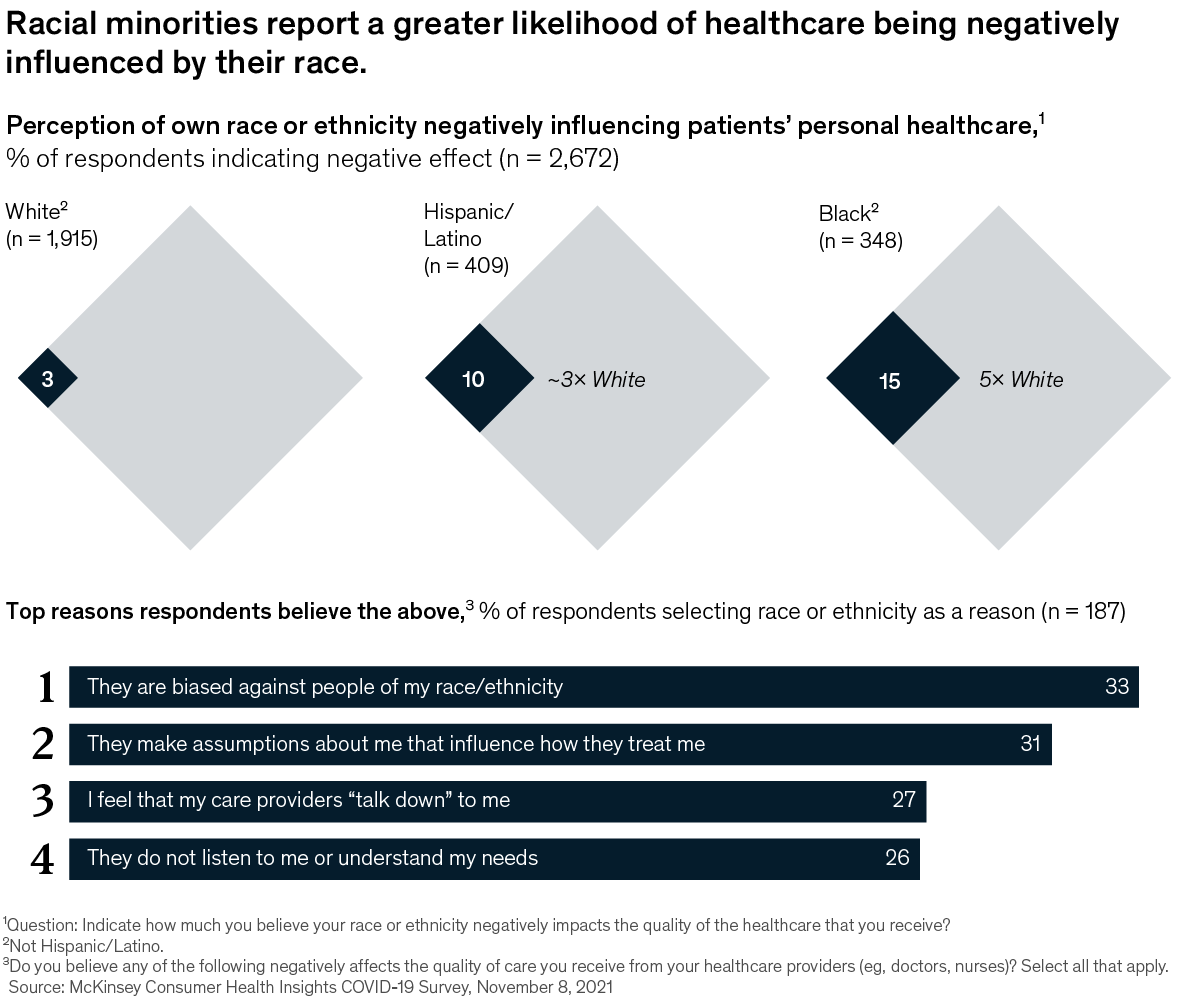
See more 



This week’s other select charts Careers constrained Two scoops of ethical ice cream, please Value and values Ramping up recycling 

Follow our thinking 



Share these insights Did you enjoy this newsletter? Forward it to colleagues and friends so they can subscribe too.
Was this issue forwarded to you? Sign up for it and sample our 40+ other free email subscriptions here.This email contains information about McKinsey’s research, insights, services, or events. By opening our emails or clicking on links, you agree to our use of cookies and web tracking technology. For more information on how we use and protect your information, please review our privacy policy. You received this email because you subscribed to The Week in Charts newsletter. Manage subscriptions | Unsubscribe Copyright © 2022 | McKinsey & Company, 3 World Trade Center, 175 Greenwich Street, New York, NY 10007
by "McKinsey Week in Charts" <publishing@email.mckinsey.com> - 03:46 - 18 Jun 2022 -
The risk function of the future
McKinsey&Company
Banks as harbingers of change .
Share this email 



McKinsey Classics | June 2022 
The risk function of the future Banks exist to lend, and every lending decision is a risk decision. That’s why the basic trends and responses in bank risk can reveal the future of the risk function throughout big business. In 2016, McKinsey published an article explaining these trends and their impact. It’s well worth reading today. The first big trend in risk is that governments, after spending billions of dollars to bail out banks and other big companies, have become much less willing to accept it. In fact, financial institutions not only face stricter regulation at home but must also comply with it wherever they operate. The recent sanctions against Russia, for example, cover banks and the companies that use them. That means all companies. The second trend is the rise and proliferation of risky customer expectations. As new companies (in banking, the fintech companies) challenge incumbents, customers of banks and other businesses have come to expect intuitive, seamless experiences; services at any time on any device; and instant decisions. The risk function will have to manage the dangers. To learn more about these and other trends and how companies can respond to them, read “The future of bank risk management.” — Roger Draper, editor, New York Learn how companies will manage risk 



Related Reading 
From risk management to strategic resilience 

Risk transformations: The heart, the art, and the science 
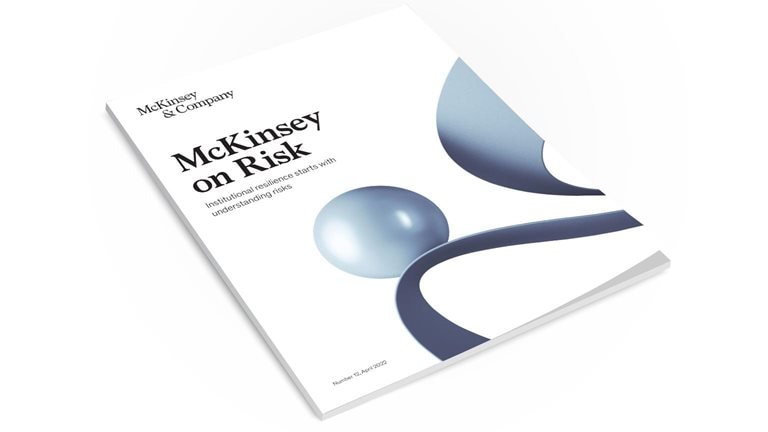
McKinsey on Risk, Number 12, April 2022 

Did You Miss Our Previous McKinsey Classics? 

A more productive environment for everyone Simple communication tweaks based on behavioral research can nudge employees into top form and create a more productive environment for everyone. Read our 2016 classic “How small shifts in leadership can transform your team dynamic.” Learn these simple communication tweaks 





Follow our thinking 


McKinsey Insights - Get our latest
thinking on your iPhone, iPad, or Android

This email contains information about McKinsey’s research, insights, services, or events. By opening our emails or clicking on links, you agree to our use of cookies and web tracking technology. For more information on how we use and protect your information, please review our privacy policy. You received this email because you subscribed to our McKinsey Classics newsletter. Manage subscriptions | Unsubscribe Copyright © 2022 | McKinsey & Company, 3 World Trade Center, 175 Greenwich Street, New York, NY 10007
by "McKinsey Classics" <publishing@email.mckinsey.com> - 11:40 - 18 Jun 2022 -
Juneteenth, metaverse, the space economy: The Daily Read weekender
Harmony Internal - McKinsey
Highlights as you ease into the weekend CURATED PICKS FOR YOUR DOWNTIME, FROM OUR EDITORS

Torea Frey
Managing Editor, SeattleThe weekend ahead marks Juneteenth and Father’s Day in the United States—are you celebrating? From diversity, equity, and inclusion to the space economy, here’s what broke through this week:
Quote of the day
—Jim Kavanaugh, CFO and a senior vice president of IBM, in a recent episode of the Future of America podcast
Chart of the day
ready to unwind?

FIREd up
Julien and Kiersten Saunders climbed the corporate ladder tirelessly until they discovered the Financial Independence, Retire Early (FIRE) movement. Now they’re on track to retire decades early as millionaires.

Explore McKinsey Themes
Essential reading on topics that matter. This weekend’s posts touch on Juneteenth, Father’s Day, the gift of feedback, and more.

54-Down: It has four dimensions
Know the answer? Test yourself with the latest McKinsey Crossword.
Share these insights
Did you enjoy this newsletter? Forward it to colleagues and friends so they can subscribe too. Was this issue forwarded to you? Sign up for it and sample our 40+ other free email subscriptions here.
This email contains information about McKinsey’s research, insights, services, or events. By opening our emails or clicking on links, you agree to our use of cookies and web tracking technology. For more information on how we use and protect your information, please review our privacy policy. You received this email because you subscribed to the Daily Read newsletter. Manage subscriptions | Unsubscribe Copyright © 2022 | McKinsey & Company, 3 World Trade Center, 175 Greenwich Street, New York, NY 10007
by "McKinsey Daily Read" <publishing@email.mckinsey.com> - 06:08 - 17 Jun 2022 -
Datadog’s State of Serverless Livestream Event
The State of ServerlessHello,
Join Datadog for an exclusive presentation of our findings about the current State of Serverless. AWS Lambda has helped catalyze the serverless movement by enabling teams to deploy and run code on a pay-as-you-go model since its launch in 2014. In fact, we found in the State of Serverless report that over half of organizations operating in each major cloud have adopted serverless.
During the livestream on June 28 at 12:00pm ET, you’ll hear how serverless compute has become an essential part of the technology stacks of organizations that operate in each cloud and that there are meaningful differences between the serverless offerings available within AWS, Azure, and Google Cloud, and each gives users distinct options for building serverless applications.
Additionally, there will be a live question and answer component for you to speak to the presenters directly. I hope to see you there!
Best,
Andrew Krug
Security and Compliance Advocacy Lead
Visit our email preference center to unsubscribe or change subscription options
©2022 Datadog Inc, 620 8th Ave, 45th Floor, New York, NY 10018This email was sent to info@learn.odoo.com.
by "Andrew Krug" <content@datadoghq.com> - 10:01 - 17 Jun 2022 -
$1 trillion is at stake: It’s time to reconsider your approach to the cloud
The Shortlist
Plus, the relationship between ice cream and ethics .
Share this email 



Our best ideas, quick and curated | JUNE 17, 2022 View in browser 
This week, we look at all the steps that companies should take to get value from the cloud. Plus, how leaders can buck a herd mentality, and David Gergen, a longtime presidential adviser and political analyst, on how the Baby Boomers have to step back and let younger leaders lead. 
Cloud aspirations versus cloud value. The potential of the cloud is pretty much indisputable today, and the vast majority of companies around the world use cloud technology. But many (even those already on the cloud) may be stuck in legacy thinking about on-site computing models, with calcified strategies based on either owning or consuming IT instead of encompassing various cloud-specific financial approaches and models. Companies are making a number of cloud economics mistakes, and McKinsey has compiled the six most common and detrimental. As cloud consumption becomes more core to business than ever, companies that manage their cloud economics effectively will find true cloud value—rather than simply having cloud aspirations. Technology talent shortage. More than $1 trillion—that’s right, trillion—of new value is at stake in the cloud. But companies aren’t seizing those benefits, because they don’t have the right tech talent in place. Nearly all—95 percent—of respondents to a recent survey told McKinsey that they lack cloud talent and capabilities, and it’s one of their biggest roadblocks in getting value from the cloud. Between 2017 and 2020, investments in cloud transformations tripled, but many companies haven’t matched that pace on the talent front. The companies that have report deep and positive impact. To help more companies build a high-performing cloud talent bench and operating model, McKinsey has identified a list of practical actions to take. Bring in your board. Increased innovation speed? Better IT efficiency? More business value thanks to technology? Look to the cloud, as countless companies have. But many haven’t captured its benefits at scale. It’s time to brief your board on the benefits of cloud tech; a clear view of its impact can help boards effectively support your cloud transformation. McKinsey’s series of charts can help boards shape their organizations’ cloud strategy. Get foundational. Too often, IT departments focus on short-term gains—migrating a set of applications to the cloud as fast as they can—without first building the right cloud foundations. Such migrations can flounder, resulting in significant delays and even financial repercussions. Companies that lay a solid foundation will see notable rewards in speed and value, and McKinsey has outlined the ten most crucial actions for building it. — Justine Jablonska 
OFF THE CHARTS I’ll take two scoops of ethics, please Ice cream and yogurt shopping preferences are constantly swirling. But while flavor is always king, ingredients, packaging, distribution, and ethical promises are increasingly important to consumers. According to McKinsey research, more than seven in ten shoppers are willing to pay more for products from producers that pay workers fairly, operate locally, and emit less carbon. 
Check out our chart of the day here. 

PODCAST Boosting support for Latino entrepreneurs and others What factors can help augment Latino participation in the US economy? In this episode of The McKinsey Podcast, senior partner Lucy Pérez discusses the findings of The economic state of Latinos in America: The American dream deferred—McKinsey’s inaugural report on this subject. She explains how greater support for Latino business owners, workers, consumers, and investors in the US could create economic opportunities for not only Latino individuals and families but also the economy overall. Pérez talks about how this subject is of personal, as well as professional, interest to her: her father owned several restaurants, the fruits of which allowed her to be the first in his family to attend college. “That was possible because of the growth and opportunity my dad created for us through his business,” she says. 
MORE ON MCKINSEY.COM When the crowd isn’t necessarily wise | The latest edition of Bias Busters explores how leaders can recognize herd mentality when it happens—and utilize the contrarian view to help break the spell. The future of African oil and gas | With momentum building for sustainability, Africa’s oil- and gas-producing nations have an opportunity to embark on an inclusive energy transition and chart a course toward a sustainable future. Five myths about retail media | Retail media networks are transforming the advertising landscape and boosting top retailers’ bottom lines. McKinsey’s latest survey helps debunk five mistaken beliefs about them. 
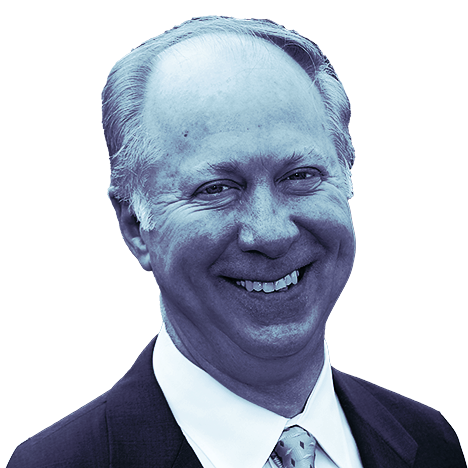
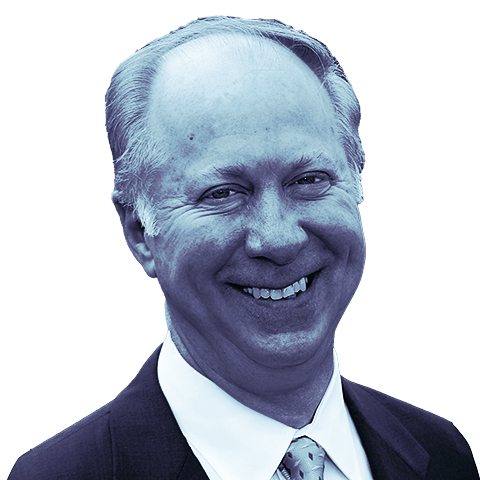
THREE QUESTIONS FOR David Gergen David Gergen, presidential adviser and founding director of the Harvard Kennedy School’s Center for Public Leadership, thinks the US needs fresh thinking to solve intractable problems. In his new book, Hearts Touched with Fire: How Great Leaders Are Made, he urges Baby Boomers to pass the baton to younger leaders. This is an edited excerpt of his Author Talks interview. What did the Baby Boom generation get wrong? As former US senator Daniel Patrick Moynihan used to say, we borrowed a trillion dollars and had a great party. And yet, what have we gotten for all the efforts of the Baby Boom population? We’re in a situation where that cohort is leaving behind a country in real trouble. The World War II generation, by contrast, left behind an America that was the strongest country since the days of Ancient Rome militarily, economically, and culturally. We were in great shape, but we’ve slipped from that, and we ought to recognize it. We ought to call it out for what it is, and we need to prepare the leaders of the future—people who are going to return this country to a better place. You say leadership requires a hard head and a soft heart. Why? Both things are important. You do need someone who is tough. I found with presidents, for example, if you’re in international negotiations with an adversary, you want to be very respectful. You want to make some progress, but you also want that adversary to know that if you don’t make progress, or if they try to screw you over in one way or another, you have a club in the closet. Keep that club in the closet; use it only as a last resort. But you better have a club because people will have a lot more respect for you and will listen to you when you do that. It also increasingly happens that, to be effective, you need a strong sense of empathy toward the people you’re dealing with. You need to see the world as they see it. An important element of leadership today is to understand the little guy, to understand the women who’ve been discriminated against, to understand the people of color who’ve been discriminated against, and to join them in trying to make their lives better. True leaders today have that combination of hardheadedness and a soft heart. What gives you hope about the future of America? What I have found in the younger generations is a grit and an idealism that I think are rare. There are a lot of young people who remind me of World War II veterans, especially those people coming back from Afghanistan and Iraq in the US military. They learned hard discipline. I’ve worked with the veterans coming back, and I’ve spent a lot of time trying to help them get elected on both sides of the aisle. I find they’re very appealing—people who can change the world. One of the big issues is that there are just not enough of them, which is one of the reasons we ought to be looking at the creation of a new national service program. We could encourage every young person between the ages of 18 and 24 to spend at least a year giving back to the community by working in a soup kitchen, working for a hospital, working in a place of worship, or working at any other place where you can give back. This, I think, is one of the great avenues forward. By the way, if you go to college and then do this, the idea behind national service is that for every year you give to your community, you could get one year off on your college debt. These debts weigh people down. If you have a lot of debt, it’s really, really hard to be in service to the country, but if we help to solve that problem, people can do wonders. — Edited by Barbara Tierney Share this Q & A 



BACKTALK Have feedback or other ideas? We’d love to hear from you. 
Tell us what you think 

Follow our thinking 



Share these insights Did you enjoy this newsletter? Forward it to colleagues and friends so they can subscribe too.
Was this issue forwarded to you? Sign up for it and sample our 40+ other free email subscriptions here.This email contains information about McKinsey’s research, insights, services, or events. By opening our emails or clicking on links, you agree to our use of cookies and web tracking technology. For more information on how we use and protect your information, please review our privacy policy. You received this email because you subscribed to The Shortlist newsletter. Manage subscriptions | Unsubscribe Copyright © 2022 | McKinsey & Company, 3 World Trade Center, 175 Greenwich Street, New York, NY 10007
by "McKinsey Shortlist" <publishing@email.mckinsey.com> - 01:23 - 17 Jun 2022 -
Stretched between home and work? So are ambitious dual-career couples.
McKinsey&Company
Why helping power couples helps companies .

Power couples In the news • When mom outearns dad. New moms spend more time on housework than their spouses do, but when a woman is the family’s primary breadwinner, she takes on even more, finds a recent study. As a mom’s salary increases to 50% of the household income, her weekly hours spent on household chores fall from 18 to 14. But after outearning her husband, a woman’s housework increases to about 16 hours weekly. Men who are primary breadwinners spend six to eight hours weekly on domestic labor, and less than that when outearned by their wives. [WaPo] • Possibilities and pitfalls. Dual-career couples (DCCs) have always been torn between the competing demands of work and home. But the COVID-19 pandemic has opened up new opportunities and potential pitfalls for dual-income couples. Working remotely enables both partners to tap into a wider job market. In addition, with many employers struggling to fill roles, workers are better able to push for flexible schedules. However, some employers are sharing concerns that hybrid work could hinder women, since they often perform more domestic work than men. [FT] 
Many workers in dual-career couples believe that top-executive responsibilities might come at a cost too high for their families. 
On McKinsey.com • The struggle is real. According to a McKinsey survey of more than 35,000 workers, 89% of women and 70% of men are part of a couple in which both partners have jobs. Employees in DCCs can often struggle to find career fulfillment because the constant juggling of responsibilities between home and two demanding careers can be overwhelming, especially when children are in the mix. That may be why employees in DCCs are less likely than those in single-career couples (SCCs) to report being happy with their jobs. • Dual ambition. Employees in DCCs generally have more career ambition than those in SCCs, McKinsey research finds. When compared with their SCC peers, more people in DCCs say they are eager to be promoted and aspire to become a top executive. When companies have policies that support employees in DCCs, workers and their employers benefit. Employees tend to be more loyal when they have flexible schedules, which may reduce turnover and hiring costs. Learn what actions companies can take to help DCCs thrive. — Edited by Belinda Yu Support dual-career couples 
Was this forwarded to you? Sign up here. Or send us feedback — we’d love to hear from you. 

Follow our thinking 


This email contains information about McKinsey’s research, insights, services, or events. By opening our emails or clicking on links, you agree to our use of cookies and web tracking technology. For more information on how we use and protect your information, please review our privacy policy. You received this email because you subscribed to the On Point newsletter. Manage subscriptions | Unsubscribe Copyright © 2022 | McKinsey & Company, 3 World Trade Center, 175 Greenwich Street, New York, NY 10007
by "McKinsey On Point" <publishing@email.mckinsey.com> - 12:12 - 17 Jun 2022 -
How to be successful at a digital transformation
the Daily read
Think differently .
Share this email 



AN ARTICLE A DAY, PICKED BY OUR EDITORS 
What’s critical to today’s successful digital transformations? Creating impact from digital investments is a major (and essential) undertaking for most organizations, as digital technologies are an increasingly important differentiator of strategy and performance. So what are the secrets to successful, sustained digital transformations? A new McKinsey survey delves into what top-performing companies do differently to set themselves apart now. As your organization navigates this era of uncertainty, check out the three lessons to beat the odds and make an impact. — Joyce Yoo, digital editor, New York 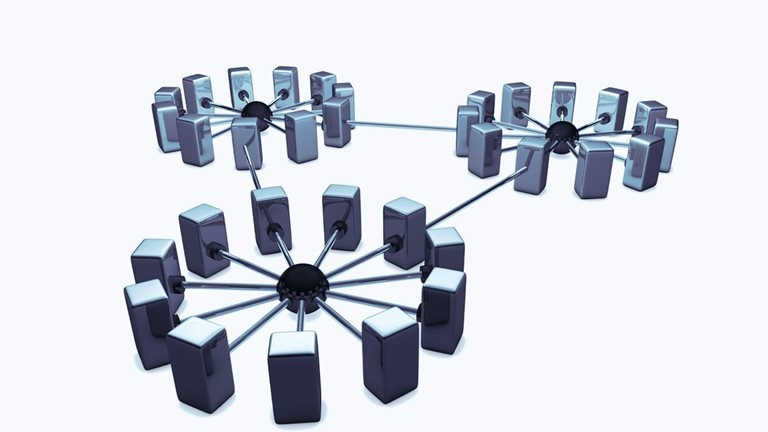
Three new mandates for capturing a digital transformation’s full value Most organizations achieve less than one-third of the impact they expected from recent digital investments. What can companies learn from the best performers about how to beat the odds today? Think differently 

Quote of the Day —Get updated on the challenges of building a Black beauty brand and the path to more equity in “Black representation in the beauty industry” 
Chart of the Day 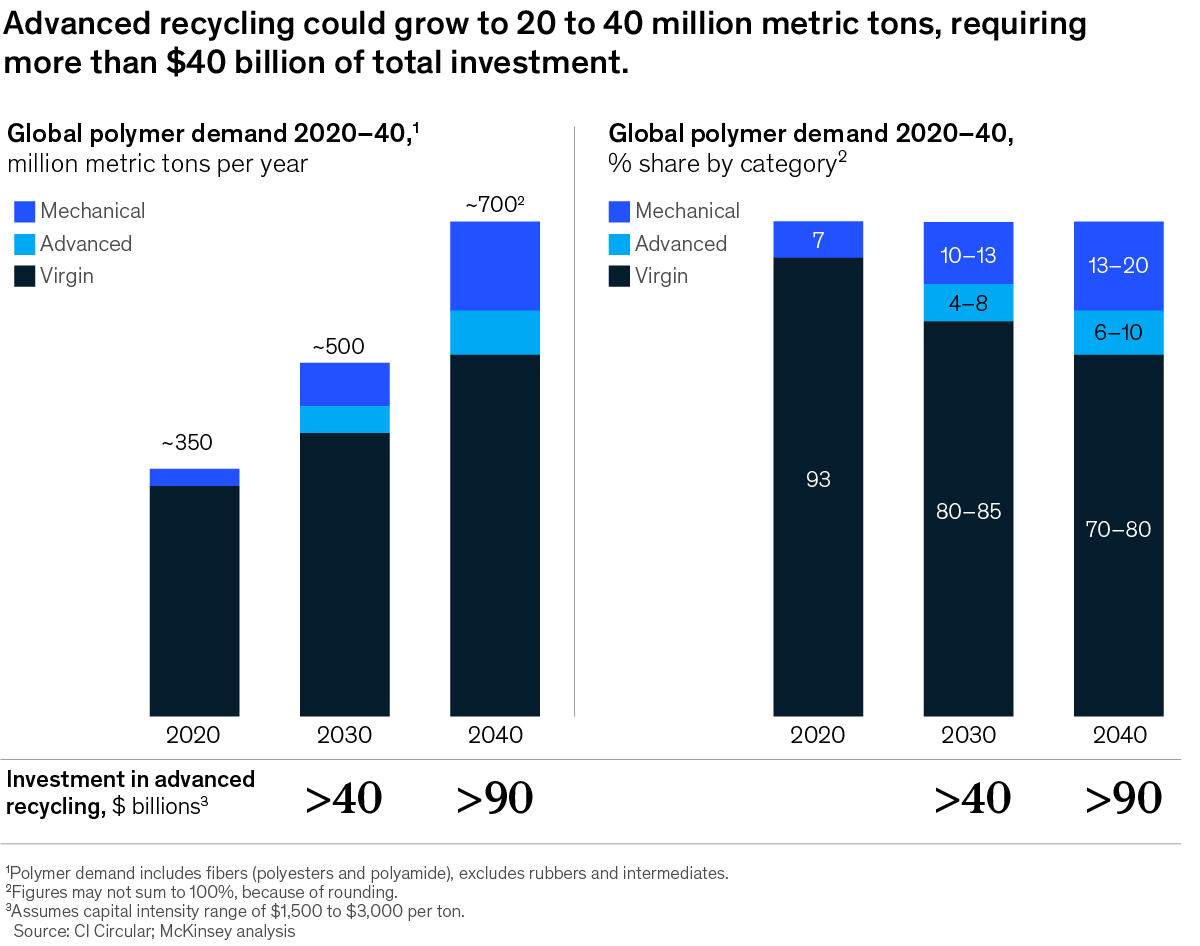
See today’s chart 
Also New 

Unbundling value: How leading insurers identify competitive advantage For US life insurers to address new and old challenges, they need a fresh approach to their business model and how they create value. Understand the implications 


Ten ways to accelerate the benefits of digital health in Saudi Arabia Saudi Arabia has already taken steps to digitize its healthcare system and fast-track improvements in patient experience, quality of care, and efficiency. Improve patient experience 


What Germany can teach the world about shared micromobility As the largest and most advanced market for shared e-kickscooters in Europe, Germany is serving as a test lab for competitive dynamics among providers. Engage the competition 


Follow our thinking 



Share these insights Did you enjoy this newsletter? Forward it to colleagues and friends so they can subscribe too.
Was this issue forwarded to you? Sign up for it and sample our 40+ other free email subscriptions here.This email contains information about McKinsey’s research, insights, services, or events. By opening our emails or clicking on links, you agree to our use of cookies and web tracking technology. For more information on how we use and protect your information, please review our privacy policy. You received this email because you subscribed to the Daily Read newsletter. Manage subscriptions | Unsubscribe Copyright © 2022 | McKinsey & Company, 3 World Trade Center, 175 Greenwich Street, New York, NY 10007
by "McKinsey Daily Read" <publishing@email.mckinsey.com> - 07:11 - 16 Jun 2022 -
Meet the Black beauty execs
McKinsey&Company
Take a new direction .
Share this email 



New from McKinsey Quarterly 
Meet the Black beauty execs Creating a path to a more equitable beauty market for Black brands represents a $2.6 billion opportunity. McKinsey talked to four founders and entrepreneurs who are leading the way. Take a new direction 



Related Reading 
Black representation in the beauty industry Black beauty consumers and brands face deep challenges when it comes to equity. Removing those barriers can lead to greater opportunity for everyone in the industry. Flip the script 


Follow our thinking 


McKinsey Insights - Get our latest
thinking on your iPhone, iPad, or Android


Share these insights Did you enjoy this newsletter? Forward it to colleagues and friends so they can subscribe too.
Was this issue forwarded to you? Sign up for it and sample our 40+ other free email subscriptions here.This email contains information about McKinsey’s research, insights, services, or events. By opening our emails or clicking on links, you agree to our use of cookies and web tracking technology. For more information on how we use and protect your information, please review our privacy policy. You received this email because you subscribed to our McKinsey Quarterly alert list. Manage subscriptions | Unsubscribe Copyright © 2022 | McKinsey & Company, 3 World Trade Center, 175 Greenwich Street, New York, NY 10007
by "McKinsey & Company" <publishing@email.mckinsey.com> - 02:41 - 16 Jun 2022 -
Join us for 🎙Webinar: Remote for refugees
Join us for 🎙Webinar: Remote for refugees
There is still time to register your spot for our next webinar.Hi MD,
There is still time to register for our next webinar. Register today for free.
🎙 Webinar: Remote for refugees
Date: 20th June
Times: 8:00 AM UTC | 9:00 AM BST | 10:00 AM CET
What will you learn?
- Practical insights to help employers and hiring managers find forcibly displaced talent
- Benefits of hiring forcibly displaced talent for the employee and the employer
- Practical guidance on how to overcome challenges when hiring refugee talent
- The state of refugee work rights around the world and the advocacy movement for right-to-remote-work
- Announcement about a new platform to help employers find vetted refugee talent
Speakers:
-
Peter Maher: Senior Special Operations Manager at Remote
-
Filipa Matos: VP of Special Operations at Remote
-
Lorraine Charles: Co-founder & Executive Director at Na'amal
Hire, onboard, and pay your international team in minutes and stay compliant.
You received this email because you are subscribed to News & Offers from Remote Technology, Inc.
Update your email preferences to choose the types of emails you receive.
Unsubscribe from all future emailsRemote Technology, Inc.
Copyright © 2022 Remote Technology, Inc. All rights reserved.
18 Bartol St. #1163 San Francisco California
by "Remote" <hello@remote-comms.com> - 08:17 - 16 Jun 2022 -
Control data privacy with logs obfuscation, this month's free online training, and more resources
New Relic
Your weekly scoop on the latest New Relic product innovations, partnerships, and events.Control data privacy with logs obfuscation options
With our new obfuscation options, you can use regular expressions and create custom rules to hash or mask confidential data before the information is stored. Using regular expressions means you won’t need lengthy manual configurations.
Learn moreNew Relic University: Free instructor-led online training
Register for online workshops and get a link to the recording and course notes after the event. Upcoming webinars include:
- Level up your Kubernetes observability (22 June)
- Getting started with dashboards & NRQL (27 June)
Register now
Absolutely simple infrastructure monitoring
Learn how to use New Relic to monitor infrastructure like CPU, RAM, storage, and network traffic. Walk through the steps to install New Relic on a virtual machine running locally, a system in the private or public cloud, or even your actual machine.Support tip of the week: Level up your synthetic monitoringSynthetic monitoring just got better with support for the latest version of Chrome (100) and the ability to set up proactive test workflows on your application. This guide and video will walk you through all the latest and greatest.
Would you like to see more of what New Relic can do for you? Request a demo > View in browser
This email was sent to info@learn.odoo.com
Unsubscribe or Change Your Email Address and preferences at any time.
For information about our privacy practices, see our Privacy Policy.
New Relic, Inc. 31-36 Golden Ln, Dublin 8, D08 A5RV, Ireland | +353 (01) 687 6808
© 2022 New Relic, Inc. All rights reserved.
New Relic logo are trademarks of New Relic, Inc.
by "New Relic EMEA" <emeamarketing@newrelic.com> - 02:49 - 16 Jun 2022 -
⚠️ Reminder Alert: Only 3 hours left for the upcoming webinar on How AI dash-cams are changing the way fleets get managed?
⚠️ Reminder Alert: Only 3 hours left for the upcoming webinar on How AI dash-cams are changing the way fleets get managed?


 We are happy to announce that we’ve collaborated with Howen Technologies for another exciting webinar. Expert speakers from Uffizio and Howen Technologies will talk about the role of AI dashcams in the transport industry.
We are happy to announce that we’ve collaborated with Howen Technologies for another exciting webinar. Expert speakers from Uffizio and Howen Technologies will talk about the role of AI dashcams in the transport industry.
Tune in with us and learn more about how AI dashcams are changing the face of transport management systems. See how artificial intelligence is affecting fleet management operations.
If you’re in the business of fleet management or simply exploring advanced fleet management solutions—this webinar is for you.
Register Your Free Seat Now Agenda of the Webinar
1. Company profiles2. Why does the transport industry need AI dashcams?
3. How are modern dashcams changing the face of fleet management systems?
4. Howen reveals their new Smart AI dashcams!
5. How do these AI dashcams function on Uffizio’s fleet management software?
6. Question and Answers
Register Your Free Seat Now 
Facebook 
Twitter 
Website 
YouTube 
LinkedIn Want to change how you receive these emails?
You can update your preferences or unsubscribe from this list.
by "Uffizio Technologies Pvt Ltd" <official@uffizio.in> - 02:30 - 16 Jun 2022 -
Prices are rising; brand loyalty is dwindling. Can retailers rise to the occasion?
McKinsey&Company
Six ways to fight inflation .

Resilience in retail In the news • Shrinkflation. You’ve probably noticed that groceries and other products are getting pricier. But you may not be aware that package sizes are shrinking, too. To shave costs and avoid price hikes that could hurt sales, companies are turning to “shrinkflation.” Cereal, chocolate bars, soap—anything in a package can be downsized. Some companies say that consumers favor buying cheaper goods, even when sizes are smaller. Shrinkflation is everywhere, but consumers can shop in stores where products are sold by weight or compare prices online. [Bloomberg] • Cutting jobs. Retailers are struggling amid high inflation and an excess of inventory. In May, the US retail industry cut more than 60,000 jobs. Big-box stores and grocery stores were among those slashing the number of employees on payrolls. As consumers spend more on services like traveling and going out to eat, many retailers are reporting lackluster earnings. Recalling the supply chain problems that led to empty shelves and shortages late last year, many department stores and warehouse clubs overstocked in early 2022. [WSJ] 
The steepest drop in sentiment was among higher-income consumers, who traded up to more expensive brands in 2020 and 2021 but might soon rein in spending. 
On McKinsey.com • Looking for value. Retailers are squeezed between rising costs and some slowing sales. So far, US household spending hasn’t been meaningfully affected, but there are early signs of a possible pull-back. Consumer confidence slipped in late February, per the latest McKinsey Consumer Pulse Survey. Just 38% of respondents said that they felt optimistic, down from 44% in October 2021. Shoppers are looking for value, with more US consumers reporting switching brands and retailers in 2022 than at any time since the COVID-19 crisis began. • How retailers can win. Retail leaders are facing the possibility of persistent inflation. But it’s still possible to respond in a way that retains customers and propels long-term growth. For instance, rather than broadly raising prices, which may erode consumer trust, retail leaders can tailor price increases by customer and product type. Companies that outperform during economic downturns tend to surpass their peers over the decade that follows, McKinsey research shows. See six ways for retailers to address inflation and become more resilient. — Edited by Belinda Yu Navigate inflation 
Was this forwarded to you? Sign up here. Or send us feedback — we’d love to hear from you. 

Follow our thinking 


This email contains information about McKinsey’s research, insights, services, or events. By opening our emails or clicking on links, you agree to our use of cookies and web tracking technology. For more information on how we use and protect your information, please review our privacy policy. You received this email because you subscribed to the On Point newsletter. Manage subscriptions | Unsubscribe Copyright © 2022 | McKinsey & Company, 3 World Trade Center, 175 Greenwich Street, New York, NY 10007
by "McKinsey On Point" <publishing@email.mckinsey.com> - 10:15 - 15 Jun 2022 -
Accelerating toward net zero: The green business building opportunity
the Daily read
Forge ahead .
Share this email 



AN ARTICLE A DAY, PICKED BY OUR EDITORS 
Sustainability is top of mind for both consumers and businesses today. And while there is so much to be done to achieve net-zero emissions of greenhouse gases by 2050, the growing demand for zero-carbon technologies could present exciting opportunities to build new green businesses. Now is the time for leaders to act on the growing demand for net-zero offerings, which could generate more than $12 trillion of annual sales by 2030. Get updated on what it will take to see exponential growth, and the seven key principles to scaling green businesses. — Katherine Tam, digital editor, New York 
Accelerating toward net zero: The green business building opportunity Surging demand for zero-carbon technologies, materials, and services gives companies opportunities to build new green businesses. Leaders that move quickly could see exponential growth. Forge ahead 

Quote of the Day “If you take many of the sustainability-induced projects, they are no longer what I would call pure technical projects. . . . So the complexity is just significantly increasing and will require much more rigorous and sophisticated stakeholder management.” —Christoph Schmitz, McKinsey senior partner on the increased complexity of managing an influx of capital in a recent episode of The McKinsey Podcast 
Chart of the Day 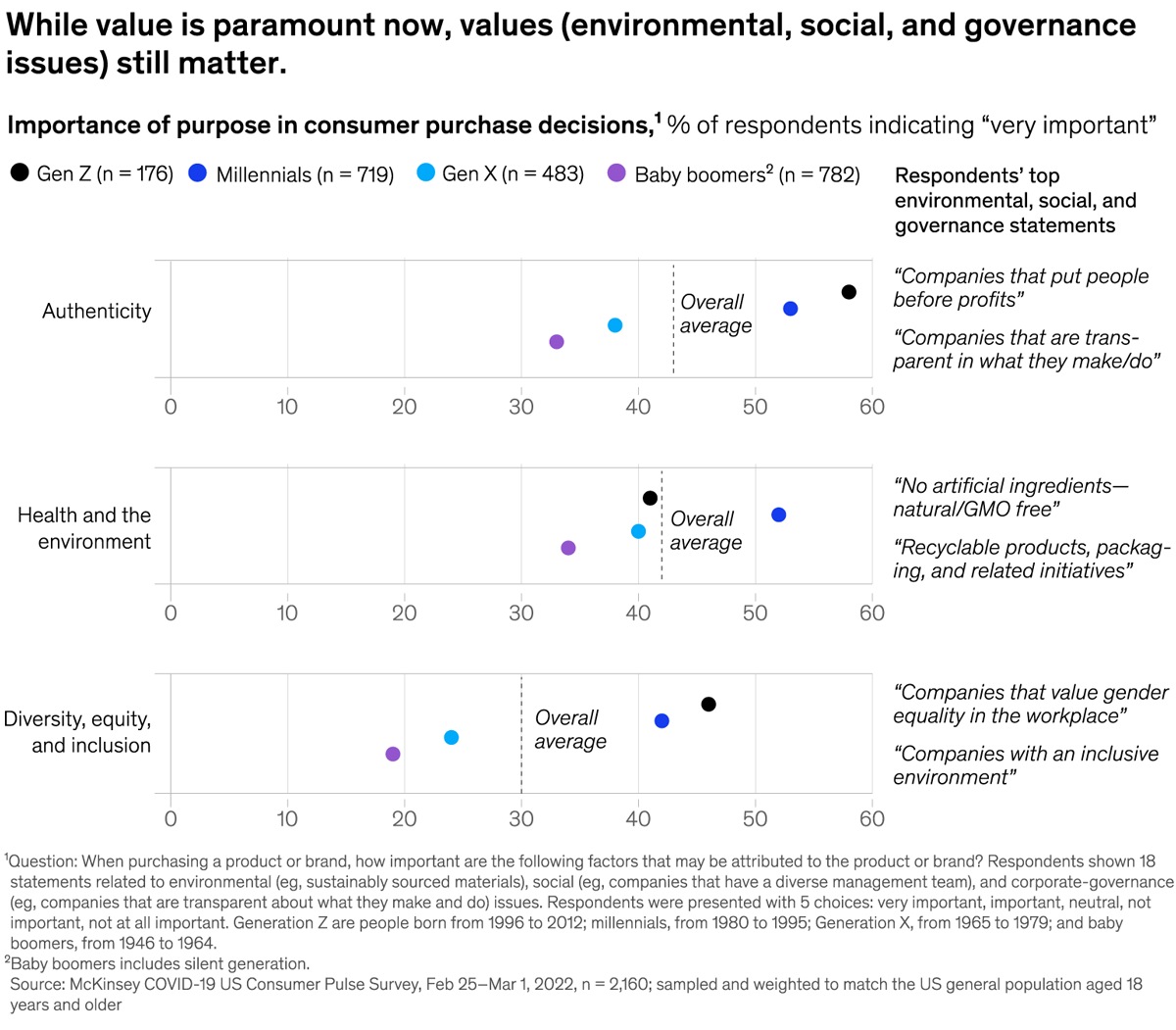
See today’s chart 
Also New 

Category management’s next horizon: How distributors can outperform As prices and customer expectations rise, category management separates distribution leaders from laggards. Get the scoop 


The future of African oil and gas: Positioning for the energy transition With momentum for sustainability building, Africa’s oil and gas producing nations have a unique opportunity to embark on an inclusive energy transition and chart a course toward a sustainable future. Look ahead 


Inside Rishad Premji’s quest to create a high-performing culture at Wipro The executive chairman of global technology services company Wipro wants to promote cultural change at the 77-year-old organization by institutionalizing five habits in the workplace. Second in a series of India Ahead conversations with visionaries, future builders and thought-leaders on what it will take to drive India’s growth over the next 25 years. Transform the mindset 


Follow our thinking 



Share these insights Did you enjoy this newsletter? Forward it to colleagues and friends so they can subscribe too.
Was this issue forwarded to you? Sign up for it and sample our 40+ other free email subscriptions here.This email contains information about McKinsey’s research, insights, services, or events. By opening our emails or clicking on links, you agree to our use of cookies and web tracking technology. For more information on how we use and protect your information, please review our privacy policy. You received this email because you subscribed to the Daily Read newsletter. Manage subscriptions | Unsubscribe Copyright © 2022 | McKinsey & Company, 3 World Trade Center, 175 Greenwich Street, New York, NY 10007
by "McKinsey Daily Read" <publishing@email.mckinsey.com> - 06:54 - 15 Jun 2022 -
The space economy: Exploring new frontiers
McKinsey Quarterly
Get your Five Fifty .
The future of the space economy Space tourism is just the start. Future forays could expand from a “space for Earth” economy to a “space for space” economy. 
Get your briefing 
Some industries could benefit greatly in the space economy, capturing billions in value. 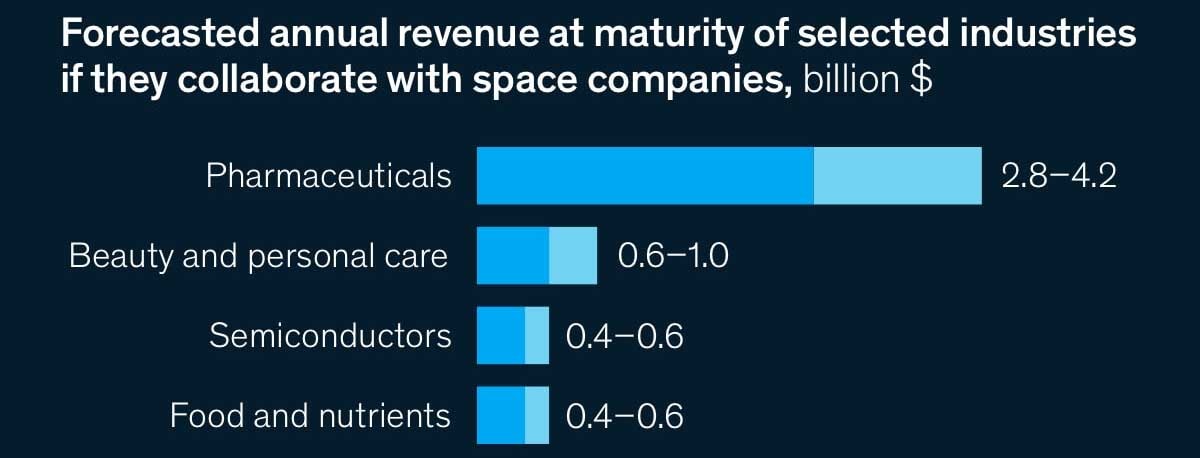

Get into orbit 


Follow our thinking 


This email contains information about McKinsey’s research, insights, services, or events. By opening our emails or clicking on links, you agree to our use of cookies and web tracking technology. For more information on how we use and protect your information, please review our privacy policy. You received this email because you subscribed to our McKinsey Quarterly Five Fifty alert list. Manage subscriptions | Unsubscribe Copyright © 2022 | McKinsey & Company, 3 World Trade Center, 175 Greenwich Street, New York, NY 10007
by "McKinsey Quarterly Five Fifty" <publishing@email.mckinsey.com> - 02:29 - 15 Jun 2022 -
1 Day Left for the Free Webinar on How are AI dash cams transforming transport management systems? Register Now for Free!
1 Day Left for the Free Webinar on How are AI dash cams transforming transport management systems? Register Now for Free!


 We are happy to announce that we’ve collaborated with Howen Technologies for another exciting webinar. On 16th June 2022, expert speakers from Uffizio and Howen Technologies will talk about the role of AI dashcams in the transport industry.
We are happy to announce that we’ve collaborated with Howen Technologies for another exciting webinar. On 16th June 2022, expert speakers from Uffizio and Howen Technologies will talk about the role of AI dashcams in the transport industry.
Tune in with us and learn more about how AI dashcams are changing the face of transport management systems. See how artificial intelligence is affecting fleet management operations.
If you’re in the business of fleet management or simply exploring advanced fleet management solutions—this webinar is for you.
Agenda of the Webinar
1. Company profilesSee what Uffizio and Howen Technologies have to offer you.
2. Why does the transport industry need AI dashcams?Let's speculate why AI dashcams have become so important in the transport sector. The risk of accidents, the rising cost of vehicle repairs, and pricey insurance premiums are just a few reasons to get you started.
3. How are modern dashcams changing the face of fleet management systems?ADAS and DMS have raised the standards of safety. They have changed the way drivers get assessed and monitored. We’ll discuss how AI dashcams can enhance video telematics—in a way that benefits all involved parties.
4. Howen reveals their new Smart AI dashcams!
What makes Howen’s new dashcams so smart? Let’s find out together!
5. How do these AI dashcams function on Uffizio’s fleet management software?You need a fleet management system to store, analyze, and understand the data generated by Howen’s AI dashcams. See how Uffizio’s platform can help you make the most out of your dashcams.
6. Question and AnswersOur speakers will take questions from the audience and answer them in this segment.
Register Your Free Seat Now 
Facebook 
Twitter 
Website 
YouTube 
LinkedIn Want to change how you receive these emails?
You can update your preferences or unsubscribe from this list.
by "Uffizio Technologies Pvt Ltd" <official@uffizio.in> - 02:44 - 15 Jun 2022 -
Don't miss! Meet Schneider Electric Industry Leader at IDC CIO Summit 2022 ASEAN
Schneider Electric
Don't miss your chance to meet our Schneider Electric Industry Leader at IDC CIO Summit 2022 ASEANIt is with great pleasure that we invite you to join us at the virtual IDC CIO Summit 2022 ASEAN.
Join and experience the Virtual Summit as subject-matter experts and industry leaders will shed light on the strategies and best practices helping IT leaders like yourself navigate their organization’s digital transformation journey. Date & TimeSchneider Electric | Main Series Sponsor
Date & TimeSchneider Electric | Main Series Sponsor
Date: 16 June 2022, Thursday
Time: 11:20am - 11:40am (BKK time) WhereIDC Arena Platform https://www.idc.com/ap/media-center/idc-arena
WhereIDC Arena Platform https://www.idc.com/ap/media-center/idc-arena+ Lifecycle Services From energy and sustainability consulting to optimizing the life cycle of your assets, we have services to meet your business needs. Schneider Electric
46 Rungrojthanakul Building. 1st, 10th, 11th Floor, Ratchadapisek Road. Huaykwang
Bangkok - 10310, Thailand
Phone +662 617 5500© 2022 Schneider Electric. All Rights Reserved. Schneider Electric is a trademark and the property of Schneider Electric SE, its subsidiaries and affiliated companies. All other trademarks are the property of their respective owners.
by "Schneider Electric" <reply@se.com> - 12:01 - 15 Jun 2022
.png?width=1200&upscale=true&name=Group%201%20(6).png)














